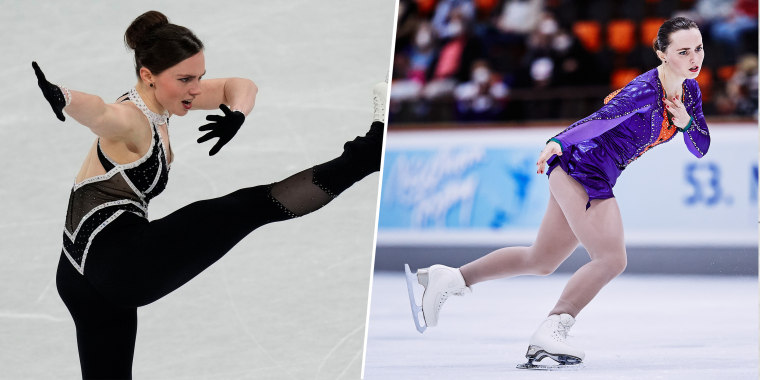When ice dancers took to the rink at the 2022 Beijing Winter Olympics, many of the women skated in something unusual: pants.
A half dozen ice dancers wore pantsuits or unitards for the rhythm dance portion of the competition, though all returned to skirts for their free dances.
Among the women's figure skaters, only Swedish skater Josefina Taljegård wore pants for the short program.
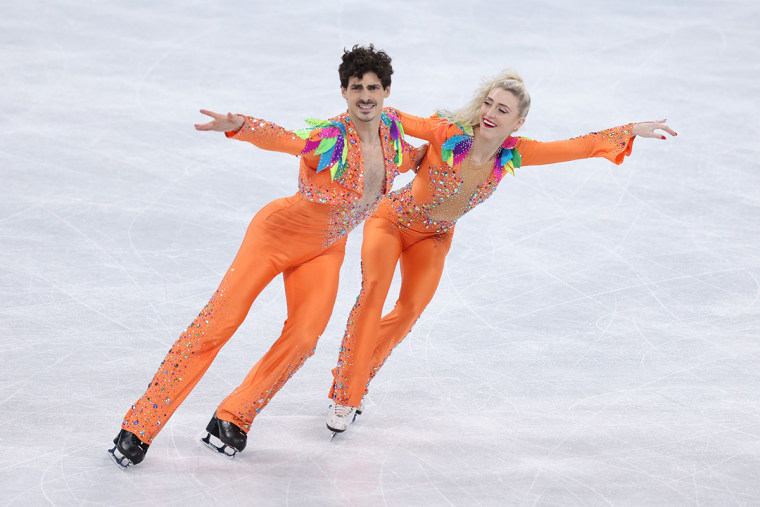
So in the year 2022, why are pants still so unusual in figure skating?
“I think that there’s definitely the mindset that it’s a very traditional sport," Mirai Nagasu, the bronze medalist who became the first American woman to land the ultra-difficult triple axel jump in Olympic competition in 2018. "Also it’s very subjective. I think as athletes, we’re all people pleasers."
Skating is about as traditional as it gets, and competitors don't want to risk annoying the judges (and losing points) by getting too edgy.
What figure skaters wear plays no small role in their overall appeal, and how judges perceive them. Women can wear pretty much what they want, as long as it’s not (too) outlandish or tacky.
According to the International Skating Union, “Clothing and make-up must be modest, dignified and appropriate for athletic competition — not garish or theatrical in design. Clothing may, however, reflect the character of the music chosen. Clothing must not give the effect of excessive nudity.” As for the guys, they must wear “trousers” and are banned from wearing tights.
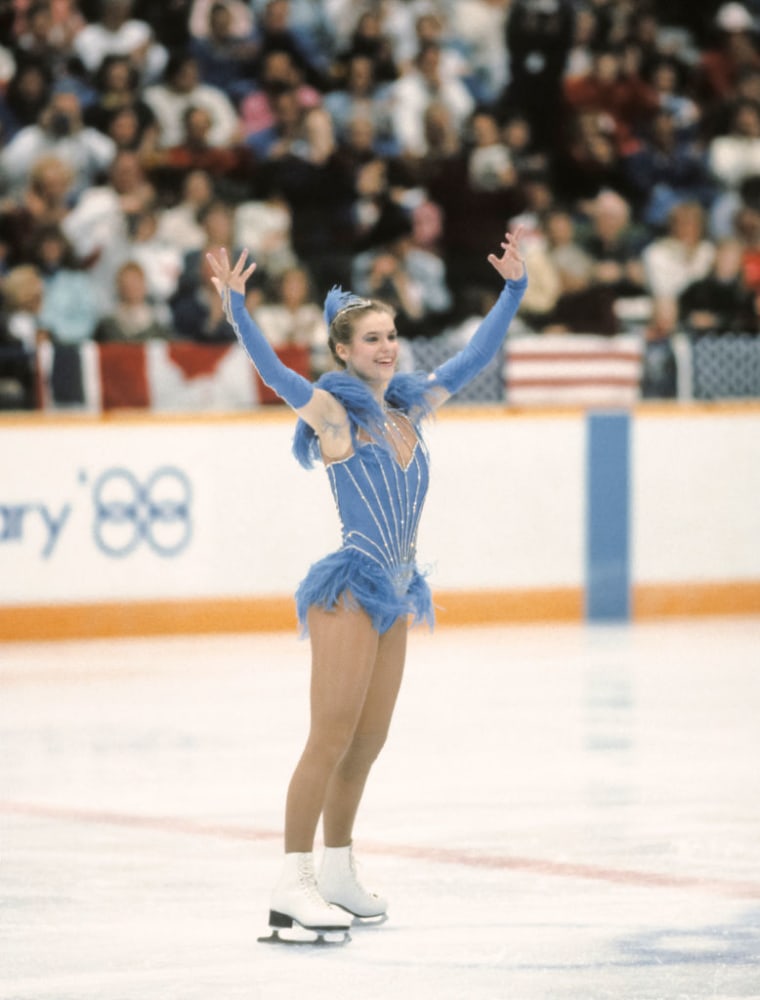
Skaters' appearances have been tightly regulated over the years. The so-called “Katarina rule” required female skaters to cover their "hips and posterior," and was instituted thanks to Katarina Witt’s racy costume at the 1988 games. The rule was repealed in 2004, and skaters were allowed to wear unitards, tights or pants if they chose.
“The rule is you have to have 50 percent of your body covered. But there have definitely been slips. But I would say that the slip-up from the French team at the 2018 Olympics cost them the gold medal. Because any kind of slip up, it takes away from the performance,” says Nagasu. (Note: French skater Gabriella Papadakis’ costume came undone and she was briefly exposed during her performance).
Nagasu said for ice dance in particular, it wasn't until a couple seasons ago that women had the choice to wear unitards.
Nagasu said skaters want clothing that’s fluid, lightweight, and durable.
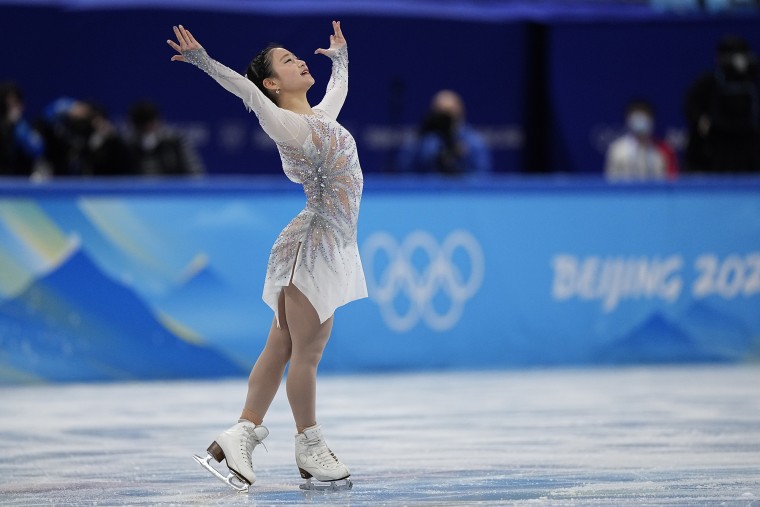
“Because it is very aerodynamic and you have to be very light on your feet, you’ll notice that between the single skaters who are doing a lot of jumps, their skirts will tend to be shorter, whereas ice dancers who don’t have to do the jumps, they mostly stay pretty on the ice. For them, they’re not even allowed to do lifts over their head where their arms extend fully. That’s reserved for pair skaters,” says Nagasu.
Because of that, “ice dancers usually have longer dresses, whereas skaters who have to do more jumpy rotational elements have shorter skirts. That’s because if you have that much fabric just whipping around, it could slow you down.”
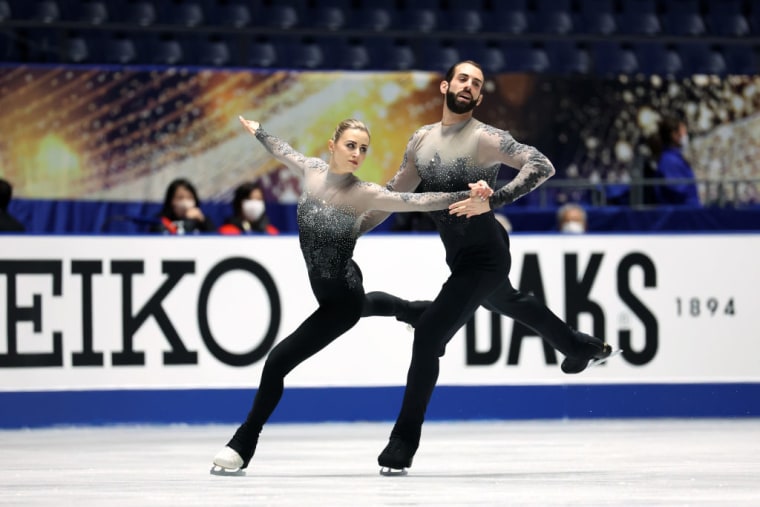
Nagasu said she never explored unitards because she liked the way the fabric of a skirt moved with her legs. But she points to Ashley Cain-Gribble, a pairs skater, with her iconic unitard look.
Related:
- Johnny Weir's all-time favorite figure skating costumes
- Why do figure skaters wear tights over skates?

